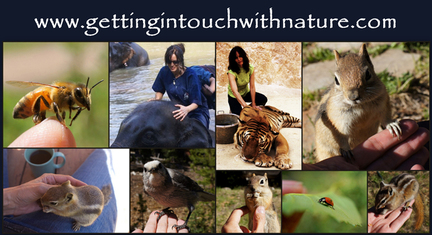|
This was a first for me. I watched this damselfly eat an entire insect. I have a series of photos showing it devouring a bug. Damselflies are so small, that it took me a while, as I was photographing it, to even realize it was eating something. At first, I thought it was eating a tiny blade of grass. After I downloaded the photos I could see that it was, in fact, eating a bug! Something I've become aware of, only after photographing insects, is how independent they are, and how they are not out to 'get humans'! I think many of us have this idea that insects intentionally want to attack us. Some might, but most don't. What I'm observing shows just the opposite. Most bugs want to move away from me. If they land on me it's because I'm in their environment like a piece of the landscape and/or they're curious, but never do I get the feeling they are out to hurt me. They like to do their own thing, whatever that happens to be. Bugs just seem to be busy with the business of living. Interestingly, bugs seek what animals and humans seek. Food, shelter, safety, and it appears even having fun is on their agenda.
0 Comments
|
SEARCH LIVEHONESTLY
Loading
My LADYBUG photo book is now available for sale! This makes a stunning gift book or the perfect coffee table book that adds color and beauty to any setting. Full of inspiring quotes.
One square mile of land contains more insects than the total number of human beings on earth!
The Earth has a surface area of 196,939,900 square miles. It's estimated that there are more than 200 million insects for each human on the planet!
A recent New York Times article claimed that the world holds 300 pounds of insects for every pound of humans.
There are some 900 thousand different kinds of living insects known in the world. The true number of insect species can only be estimated from present and past studies. Anywhere from 1 million to 10 million insects may still be unidentified as yet, according to scientists.
Archives
September 2011
Categories
All
About insects ...
"These small, six-legged creatures include bees, ants, flies, mosquitoes, grasshoppers, crickets, butterflies, cockroaches, termites, fleas, and beetles. Although some insects annoy us by spreading disease, damaging crops and household items, and biting people and pets, these represent only about 17% of all the 800,000 species. The rest of the insects serve a very valuable purpose in nature. These serve as food for birds, frogs, fish, and other animals; pollinate crops; destroy other harmful insects; give us honey, bees wax, shellac, and silk; and keep the land clean by feeding on dead animals and plants." Source of the above: http://www.bigsiteofamazingfacts.com |





















 RSS Feed
RSS Feed
